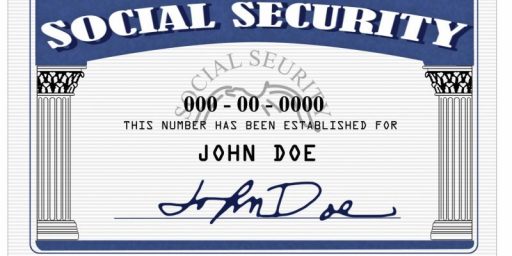Some Generals Will Make More in Retirement Than Active Duty
A change in the law will radically increase retirement pay for generals and admirals.
USA Today reports, “A change in federal law to keep experienced officers in uniform allows top generals and admirals to make more in retirement than they did on active duty.” It’s interesting, if not precisely true.
The new pension rules were part of the 2007 Defense Authorization Act to address concerns that the military would lose too many experienced generals and admirals during wartime.
Previously , the maximum annual pension was based on an officer’s pay at 26 years of service. Now, a four-star officer retiring in 2011 with 38 years’ experience would get a yearly pension of about $219,600, a jump of $84,000, or 63% beyond what was once allowed. A three-star officer with 35 years’ experience would get about $169,200 a year, up about $39,000, or 30%.
The highest pension, $272,892, is paid to a retired four-star officer with 43 years of service, according to the Pentagon. Before the law was changed, the typical pension for a retired four-star officer was $134,400. The top pay for an active-duty officer is capped at $179,900; housing and other allowances boost their compensation an additional third.
“These changes cumulatively provide consistent recognition across an individual’s entire career, not just the first 26 years of service,” Pentagon spokeswoman Eileen Lainez said. “This recognition also translates into increased readiness through the increased retention of our most experienced leaders.”
Naturally, at a time when we are talking about serious cuts in our defense budget–including drastic pension reform–this will raise some eyebrows. But it’s likely quite true that some significant number of general officers–99 percent of whom could easily walk out the door an quadruple their salaries in the private sector–would have retired at the outset of the wars in Afghanistan and Iraq given that their retirement benefits were already capped.
So, how does an officer make more in retirement than on active duty? Well, active pay is capped at $14,975.10 per month ($179,701.20 annually) by statute but the top members of the Joint Chiefs are allowed to make $20,597.80 monthly, or $247,174.60 annually.
Under the system these folks entered under, soldiers are eligible to retire after 20 years of service and receive 50 percent of their base pay for life. For each additional year of service, they added another 2.5 percent, meaning they would receive 75 percent of their base pay for life after 30 years. At 40 years–statutorily unattainable for all but senior generals and admirals–they’d be eligible for 100 percent. Presumably, after 43 years–again, a ridiculously unusual case–uncapping it would allow them to draw 107.5 percent of their base pay.
But note that I keep referring to “base pay.” That’s the amount of guaranteed salary that they pay taxes on. Military personnel can, depending on circumstances, receive substantial additional pay for housing, subsistence (known as “food” in civilian circles), and various specialty pay and hazardous duty pay–all tax exempt. That all goes away upon retirement. And it’s highly unlikely that even 107.5 percent of this officer’s base pay exceeded what he was actually pulling in on active duty.
Via Micah Zenko







I am pretty sure that 2.5 percent does not get added per year after 30 years. And while housing allowance etc. are exempt from income tax, they still have FICA taxes deducted.
@Donald Sensing: I always thought retirement maxed out at 30 years/75 percent. But that’s the only explanation that makes sense–other than just bad reporting from USAT.